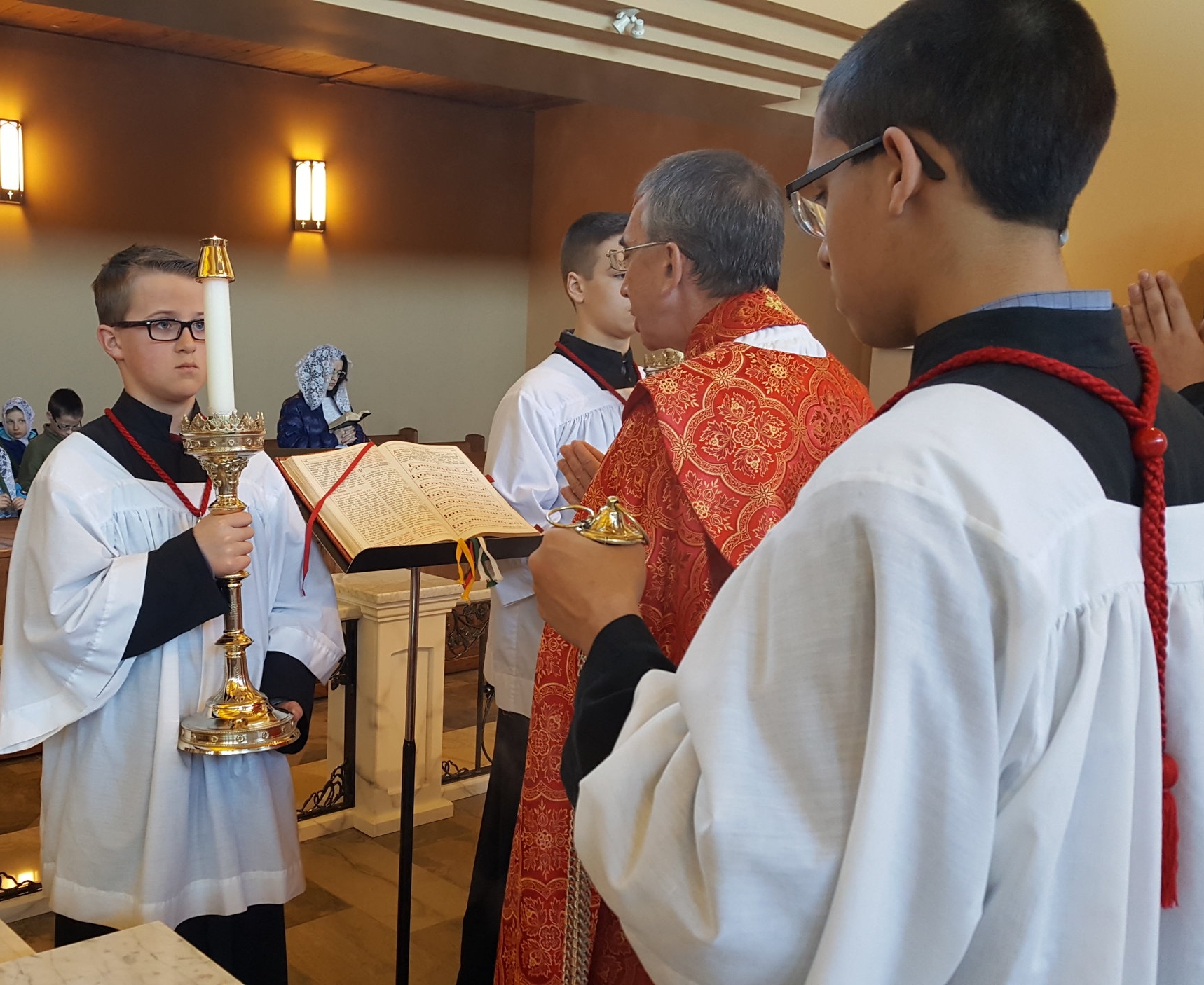An excerpt from the Passion and Death of Jesus Christ by St. Alphonsus de Ligurori
Simple Exposition of the Passion: Chapter V: Agony of Jesus in the Garden of Olives (p.174-176)
I. And a hymn being said, they went out to Mount Olivet… Then Jesus came with them to a country place, which is called Gethsemani. As soon as they had said grace, Jesus leaves the supper room with his disciples, goes into the garden of Gethsemani, and begins to pray. But, alas, at the commencement of his prayer, he is assailed with a great fear, an oppressive tediousness, and an overwhelming sadness. He began to fear and be heavy, says St. Mark. St. Matthew adds, He began to grow sorrowful and to be sad. Hence our Redeemer, overwhelmed with sadness, said that his blessed soul was sorrowful even unto death. Then was presented before him the melancholy scene of all the torments and ignominies which were prepared for him. In his Passion these afflicted him one by one; but in the garden, the buffets, the spittle, the scourges, the thorns, the nails, and the reproaches which he was to suffer, came all together to torment him. He there embraced them all, but in embracing them, he trembled, he agonized, and prayed: And being in an agony, He prayed the longer. But, my Jesus, who compels Thee to submit to such torments? The love, he answers, which I bear to men constrains me to endure them. Ah, how great must have been the astonishment of heaven at the sight of omnipotence become weak, of the joy of paradise oppressed with sadness! A God afflicted! And why? To save men, his own creatures. In the garden he offered the first sacrifice: Jesus was the victim, love was the priest, and the ardor of his affection for men was the blessed fire with which the sacrifice was consummated.
II. My Father, if it be possible, let this chalice pass from Me. Thus Jesus prayed. My Father, he says, if it be possible, save me from drinking this bitter chalice. But he prayed thus not so much to be delivered from the torments that he was to endure, as to make us understand the pain which he suffered and embraced for the love of us. He prayed thus, also, to teach us that in tribulations we may ask God to deliver us from them, but that we should at the same time conform entirely to his divine will, and say with him, Nevertheless, not as I will, but as Thou wilt. And during the whole time of his prayer he repeated the same petition. Thy will be done…And He prayed the third time, saying the self-same word.
Yes, my Lord, for Thy sake, I embrace all the crosses which Thou wilt send me. Thou, an innocent, hast suffered for my sake, and shall I, a sinner, after having so often deserved hell, refuse to suffer in order to please Thee, and to obtain from Thee the pardon of my sins, and Thy grace? Not as I will, but as Thou wilt: let not my will, but Thine, be always done.
III. He fell flat on the ground. In his prayer in the garden, Jesus fell prostrate on the ground, because, seeing himself clothed with the sordid garment of all our sins, he felt, as it were, ashamed to raise his eyes to heaven.
My dear Redeemer, I would not dare to ask pardon for so many insults which I have committed against Thee, if Thy sufferings did not give me confidence. Eternal Father, look on the face of Thy Christ: look not on my iniquities, behold this, Thy beloved Son, trembling, agonizing, and sweating blood in order to obtain Thy pardon for me. And his sweat became as drops of blood, trickling down upon the ground. But, my Jesus, in this garden there are not executioners to scourge Thee, nor thorns, nor nails to torture Thee: what, then, extracts so much blood from Thee? Ah! I understand Thee: it was not the foresight of Thy approaching sufferings that then afflicted Thee so grievously; for to these pains Thou didst spontaneously offer Thyself: He was offered because it was His own will. It was the sight of my sins; these were the cruel press which forced so much blood from Thy sacred veins. Hence, it was not the executioners, nor the nails, nor the thorns, that were cruel and barbarous in Thy regard: no, my sins, which made Thee so sorrowful in the garden, have been barbarous and cruel to Thee, my sweet Redeemer. Then, in Thy great affliction, I too have added to Thy sorrows, and have grievously afflicted Thee by the weight of my sins. Had I been guilty of fewer sins, Thou shouldst have suffered less.


















